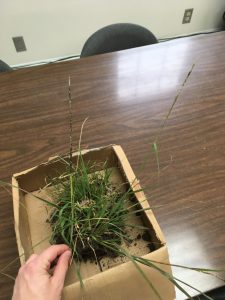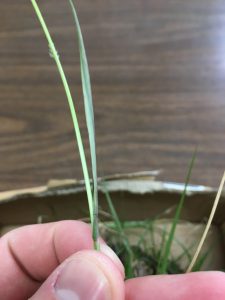I received a call about smutgrass in bermuda/bahia pasture. Smutgrass is a perennial, warm-season species with no auricle present. The seedhead is a spike-like panicle with a black fungus on seeds. This weed is often tough to control in pastures and a combination of cultural and chemical control is best. Listed below are some pictures of smutgrass and control measures as provided by Dr. McCullough from UGA on the georgiapastureweeds website. Overall Velpar is our best choice in bermuda/bahia pastures.



Cultural Control
Mowing can suppress vegetative growth of smutgrass populations and reduce seed production. Avoid overgrazing pastures to enable the desirable grasses to resume competitive growth with smutgrass. Fertilizations according to soil tests can promote growth of desirable grasses to fill in voids created after smutgrass is suppressed or controlled with herbicides.
Chemical Control
In grass pastures, Prowl H2O (pendimethalin) may provide some preemergence control of smutgrass from seed but control can be unacceptable in fields with a history of populations that overwinter. In bermudagrass and bahiagrass pastures, Velpar 2L (hexazione) can be used to selectively control smutgrass from 2.75 to 4.5 pints per acre. Mature plants may only exhibit growth suppression compared to younger plants that are more susceptible. Livestock may be immediately grazed following a broadcast application of Velpar at 4.5 pints per acre or less. Do not harvest treated vegetation for 38 days after treatment. There are no selective postemergence herbicides that control smutgrass in legumes, tall fescue, and other cool-season grasses. Spot treatments or wick-bar applications of glyphosate are recommended.